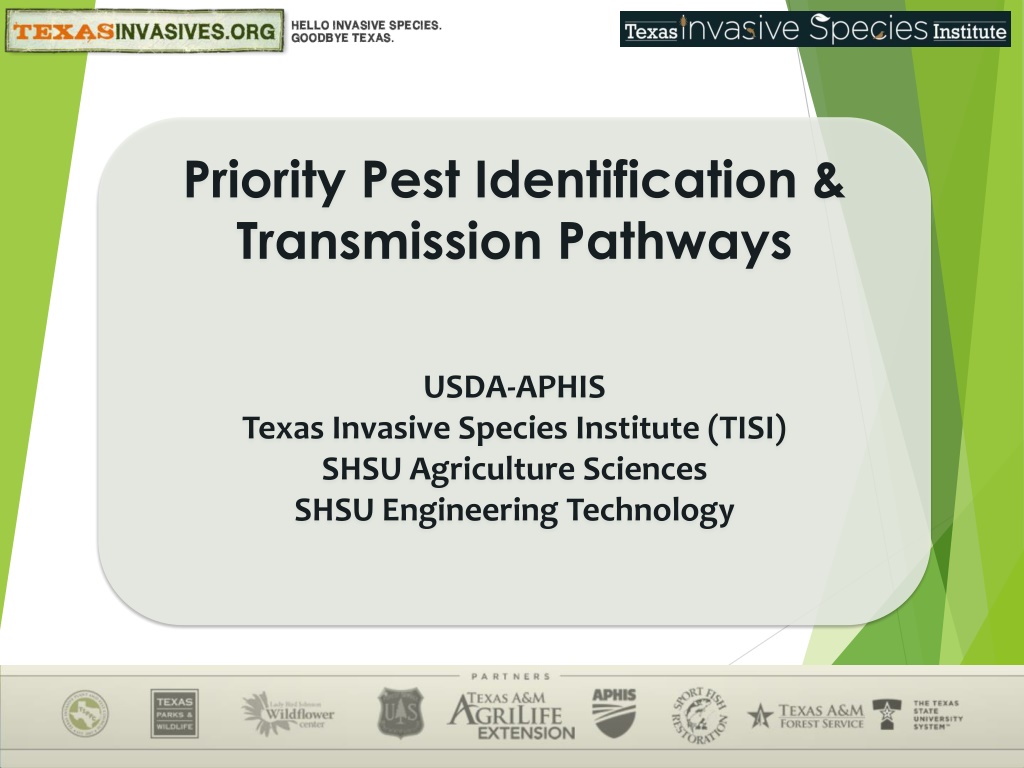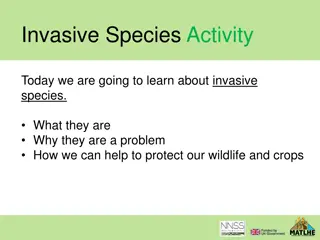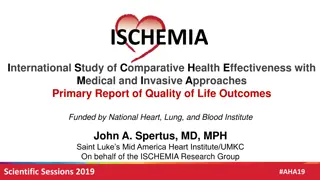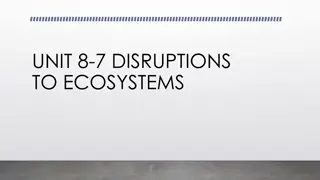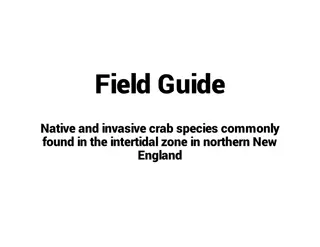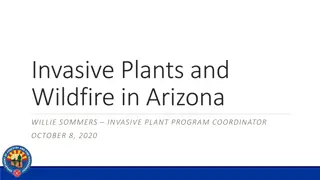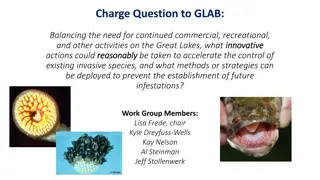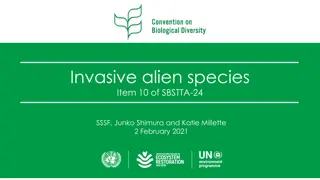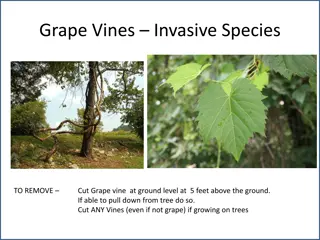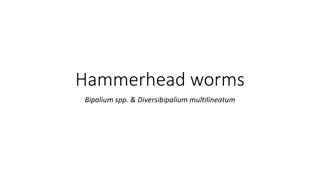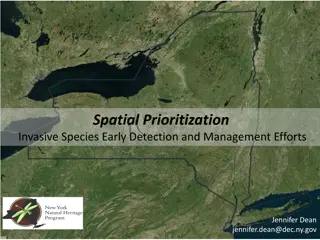Understanding Invasive Species Transmission Pathways
Explore the identification and transmission pathways of priority pests, focusing on the measures like plant pest analysis, survey enhancement, and rapid response capabilities for invasive species management. Delve into the critical role of human interactions in creating pathways for invasive species spread, whether accidental or intentional, and learn about successful mitigation efforts and best practices in handling invasive species.
Download Presentation

Please find below an Image/Link to download the presentation.
The content on the website is provided AS IS for your information and personal use only. It may not be sold, licensed, or shared on other websites without obtaining consent from the author. Download presentation by click this link. If you encounter any issues during the download, it is possible that the publisher has removed the file from their server.
E N D
Presentation Transcript
Priority Pest Identification & Transmission Pathways USDA-APHIS Texas Invasive Species Institute (TISI) SHSU Agriculture Sciences SHSU Engineering Technology
TEKS / OBJECTIVES TEKS: 130.25 16 (A-B) 17 (A-D) The student identifies how plants grow and how specialized cells, tissues, and organs develop. The student diagrams the structure and function of nucleic acids in the mechanism of genetics. Objectives: Student will interpret the transmission pathways and criticize the implications. Students will construct a plan for the best practices to go over the transmissions.
Anticipation Questions What are some examples of successful human mitigation efforts? What could you do when you identify Invasive Species in your community? What is the best practice in your opinion when handling invasive species?
and Invasive Species Management Plant Pest and Disease Prevention Program 1. Enhancing plant pest and disease analysis and survey. 2. Targeting domestic inspection activities at vulnerable points for safeguarding. 3. Enhancing and strengthening pest identification and technology. 4. Safeguardingnursery production. 5. Conducting targeted outreach and education. 6. Enhancing mitigation and rapid response capabilities.
What is a Pathway? Pathways for invasive species can range depending on how they are spread. Aquatic vs. Terrestrial Ex: Zebra Mussel vs. King Ranch bluestem Intentional vs. Accidental Ornamental plant vs. Seed contaminants Humans have imported and transplanted numerous species throughout the world.
What is a Pathway? Pathways are created by human interactions more often than natural dispersal. Escape (from field, greenhouse, aquarium, etc.) Pet Trade Ornamental / Aesthetic Purpose Imported Goods Many species are Hitchhikers on imported goods and shipping supplies. Brought to manage or replace other species
Examples: Aquatic Importation Importation of goods and how they are transported has led to accidental introduction. Many invasive aquatic animals have microscopic larvae that are drawn up in the ballast water for cargo ships. Invasive Bryozoans Australian Spotted Jellyfish Quagga Mussels Zebra Mussels Further spread by recreational boating Click here for Spread of Zebra Mussels
Examples: Biocontrol gone wrong. Grass Carp- to control invasive aquatic plants like Hydrilla. Cactus Moth- In Australia and the Caribbean, imported to control Opuntia cacti. European Rabbit- brought to Washington state to control weeds. Brown Trout- Imported to fill overfished waterways.
Examples: Animal Trade failures Nutria- Brought to supplement beaver fur trade and escaped captivity. Burmese Python- one of the notorious pet- trade invasive species. Red Lionfish- has invaded the Gulf of Mexico up to NC, all from one flooded aquarium in Florida. Exotic Pet release animation
Examples: Animal Trade failures Monk Parrot- imported in 1960s as exotic pets; 1992 US banned its importation. Green Iguana- ornery disposition and long lifespan often get them released into the wild. Has invaded Puerto Rico, Florida and south Texas. Prohibited species in Florida.
Examples: Terrestrial Importation Importation of goods and how they are transported has led to accidental introduction of many pests. Invasive pests often hitchhike on other goods being imported like crop root stock, plants, fruits and grains. Examples: Asian Citrus Psyllid Red Imported Fire Ants Invasive Slugs & Flatworms Soil Nematodes South American Palm Weevil U.S. Introduction of Fire Ants
Examples: Terrestrial Importation Importation of goods and how they are transported has led to accidental introduction of many pests. Other invasive pests, especially bark beetles, have spread by embedding in wooden pallets, hiding in wooden chips for cargo or as cargo stowaways. Asian Longhorned Beetle Emerald Ash Borer Redbay Ambrosia Beetle Smaller European Elm Beetle Then spread by movement of firewood EAB introduction & spread
Examples: Imported Plants Brought for ornamental/aesthetic purposes The main pathway hundreds of invasive plant species have entered the US. Chinese Tallow Nandina Kudzu Japanese Honeysuckle Further spread by escaping cultivation
What is a Pathway? Animation & Lesson recall: What are the similarities between the spread of mussels, insects, plants, exotic pets and soil nematodes? What were the pathway differences?
Stop the Spread: Elevator Pitch How would you tell your friends about Invasive Species? How would you get them to prevent pathways for Invasives? Pair up and you are given 5 minutes to produce a 1-minute pitch on transmission pathways. Props must be used. Both members must speak.
